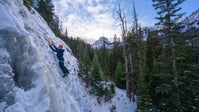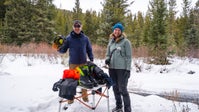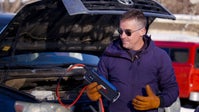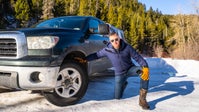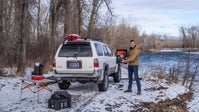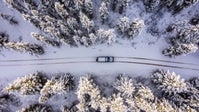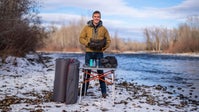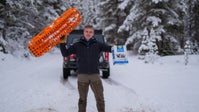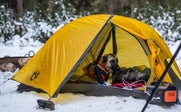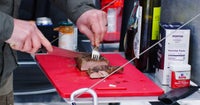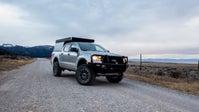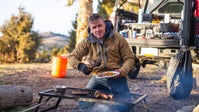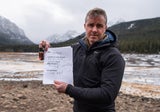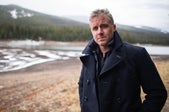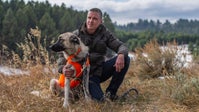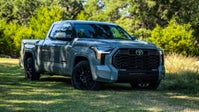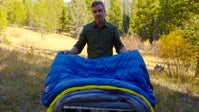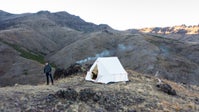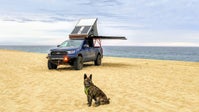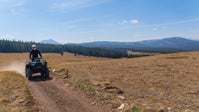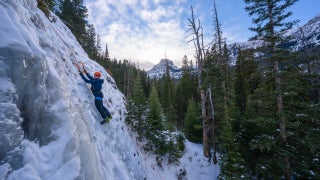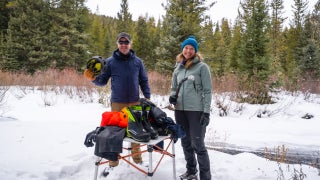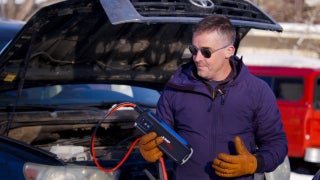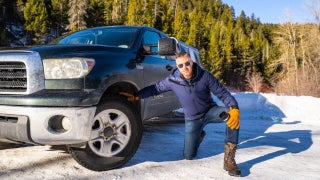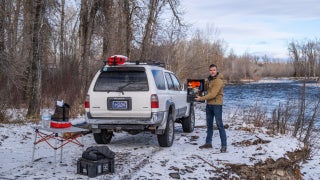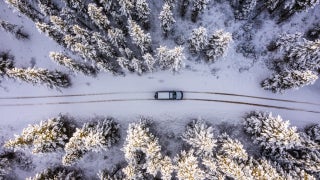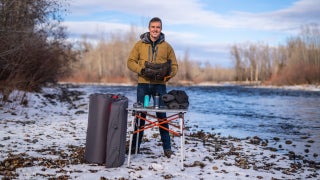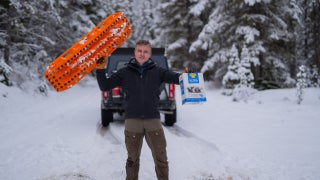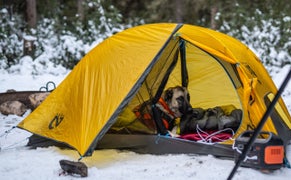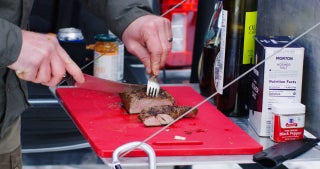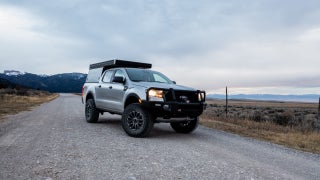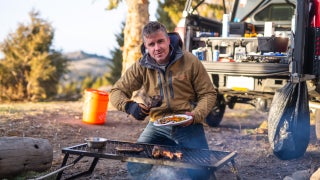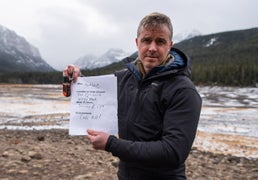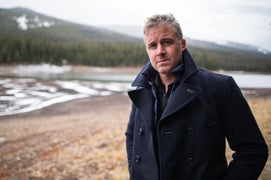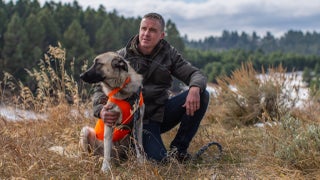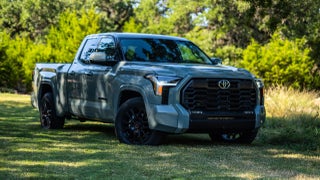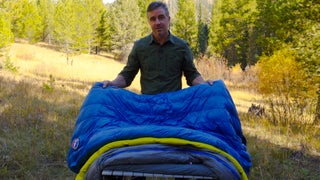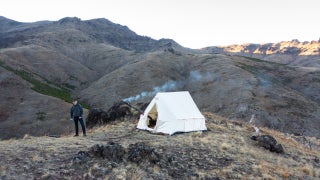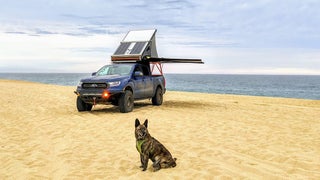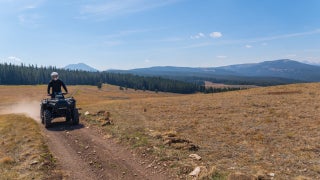Wes Siler: I am a terrible photographer. But luckily, I’m here with my friend Chris, who’s a pretty good photographer. He’s going to give you some tips on how to do better.
Chris Brinlee: All right, when you’re approaching landscape photography, you don’t have to have one of these to get a great shot. We’re going to talk about how you can do great photography with just a mobile phone that you’ve got in your pocket.
[MUSIC PLAYING]
Siler: So let me start by just, like, taking a photo that, like, I would take anyways—like, Oh, look—pretty mountains. I point my camera at it and click the shutter button. And it’s just, like, a white blur.
Brinlee: The few things we can keep in mind when we’re approaching the photography to try and frame up a shot are the composition, the lighting, and the subject matter. So starting out, think about how you’re going to frame the image and then what you’re trying to communicate with that photo. And then finally, the lighting is going to come into play. And you’re essentially going to work with the conditions that you have to achieve the best result.
Siler: OK. So when we talk about frame, I look at this. There’s some mountains in the distance. There’s the Yellowstone River beside us. We’re kind of standing under a bridge. How does that all come together into one photo that’s actually compelling?
Brinlee: So when we’re taking a look at the scene, we’ve got some really beautiful mountains in the background. But they’re pretty far off, and they’re not going to really kind of scream out as the hero of the shot.
Siler: Right.
Brinlee: And so by looking around at what we’ve got in the scene, we’ve got this nice bridge. It has a beautiful arch. We’ve got some great foreground elements. And if we incorporate those into the image that we’re making, it can add a bit more visual interest and make it more compelling.
So the first thing I always like to keep in mind is making sure that I’ve got a straight horizon. It’s automatically going to make the photos a step above what they might be if they’re slanted. That’s the first thing that I’ll always do when I’m framing up a composition.
And then next, we can look at these foreground elements and how they intersect with the background to create something compelling. And so, right here, you’re framing up this really nice archway. And that right there is giving a bit more visual interest than just this bluebird, sort of blown-out sky.
Siler: Right.
Brinlee: And so by applying that, it can create something that looks a lot more dynamic.
Siler: So we’re standing here in the snow, and things are blown out. Everything just, whoa, white, right? So how do we account for that?
Brinlee: So when we’re thinking about the exposure of an image, the details and highlights and whites and the bright sections of the image are always going to blow out first.
Siler: Got it.
Brinlee: So if we make a point to expose for those, everything else will be a bit more leveled out. And then just snap away, and the computational photography will do the rest.
Siler: That’s awesome. That’s what I see in a lot of your photos. Your foreground is people doing something exciting in this beautiful setting. And that helps make the photos more dynamic.
Brinlee: Absolutely.
Siler: Right? Yeah.
Brinlee: Any time you can add some type of subject material, it’s going to give the photo, the image, some more dimension and some depth.
Siler: Great. All right, so go stand over there—perfect. And now come back and look at this. I think I’ve created a more dynamic, interesting picture that I was doing on my own.
Brinlee: Well, one other thing that I would consider: when you’re incorporating a subject into a landscape, think about where the subject is going to intersect with the horizon.
Siler: OK.
Brinlee: So in this instance right here, my head is kind of right-intersected with this tree line. And so it tends to get lost.
Siler: Right.
Brinlee: What is nice is, we’ve got kind of this key coming into the background. And that’s creating a bit of depth.
Siler: Yeah.
Brinlee: But if you could get lower in your framing, it would put my body more over the position of these mountains.
Siler: OK.
Brinlee: And it would give a bit more dynamics in the scene.
Siler: Walk back out there. We’re going to do this again. I may need to get a little lower. Oh, that’s good. Oh, good reflection. All right, come check this out. I think this is a pretty good photo now.
Brinlee: This is a great shot, Wes—some pretty significant differences. This subject really pops out more because there’s this framing an intersection with a blue sky versus the horizon line.
Siler: Right. Yeah, I totally see that. Well, that’s how to do better with landscape photography without having a whole lot of equipment, without being a professional—just creating that stuff where you see a pretty view, want to show it to your friends and family, and making sure that you actually capture that instead of just getting a blur. Thank you, Chris.
Brinlee: You can get amazing shots with what’s in your pocket.
